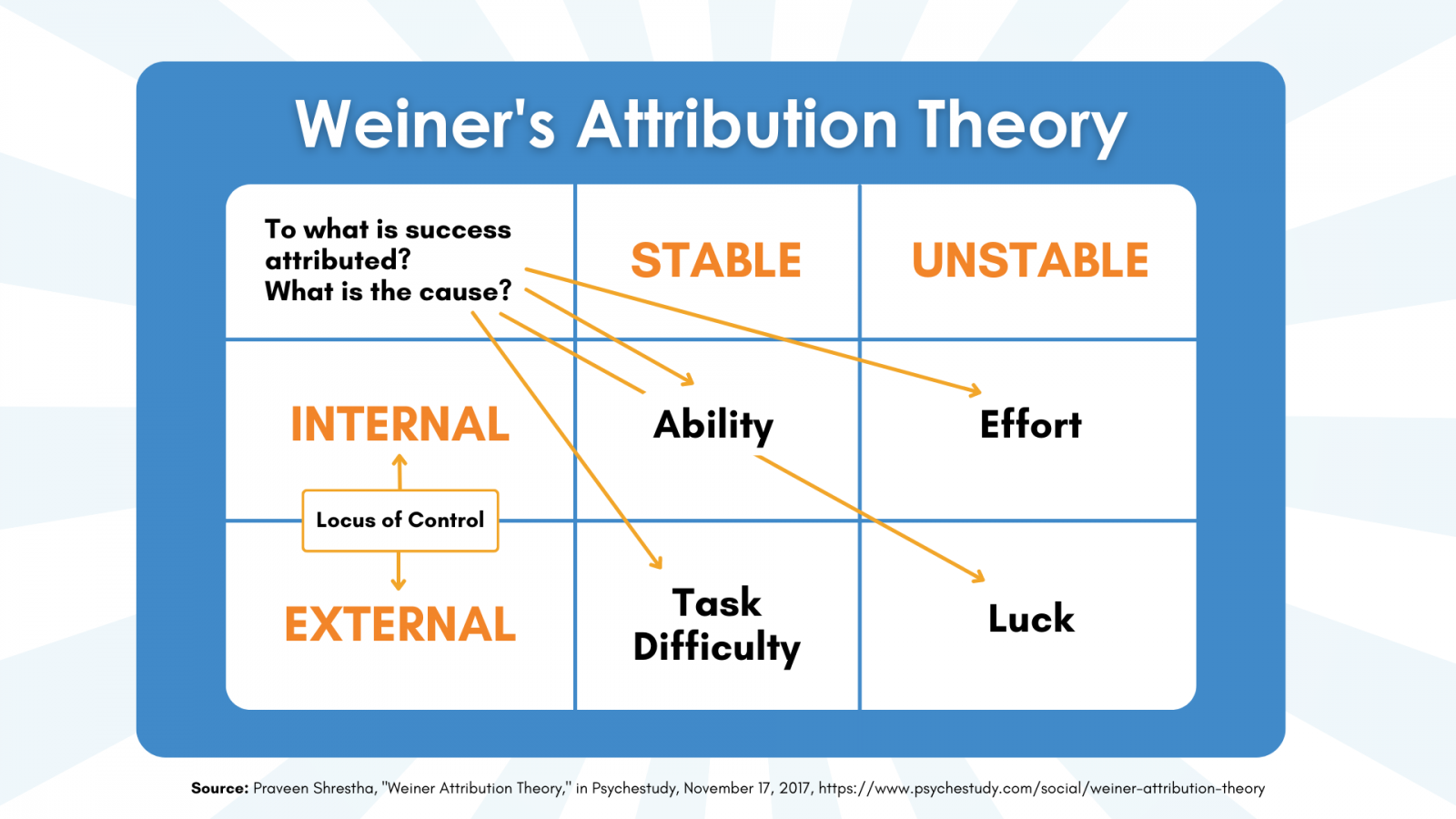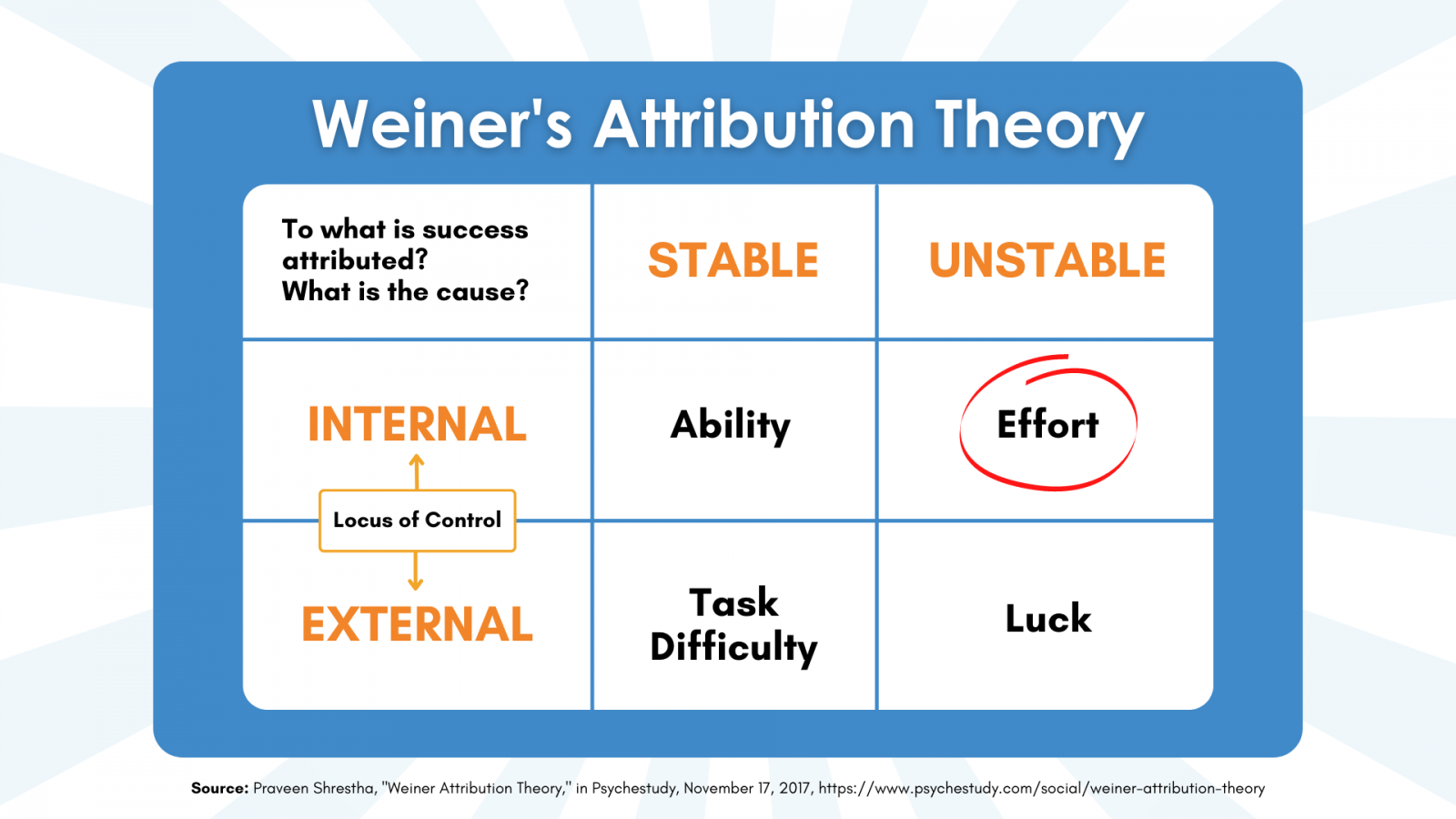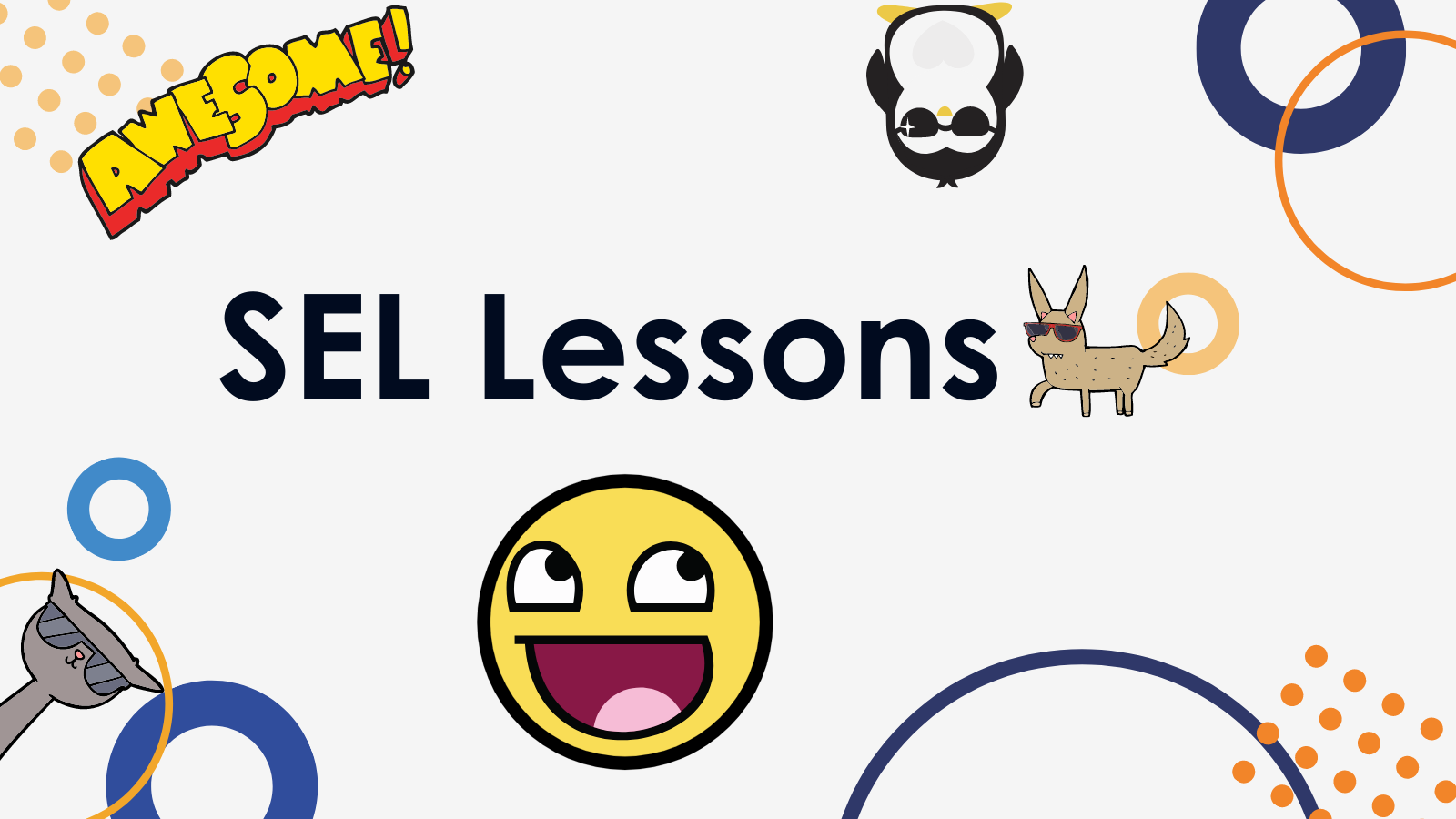Targeted Growth and Healthy Attributions
Tips from our C5 Intervention Program & C5 Summer Institute
This superhero tip comes from one of our Core Five components, Targeted Growth. With this C5 component, we are focused on a specific area of growth with our students and in this blog, we will narrow our focus on “attribution theory."

Attribution theory may or may not be familiar to many of you. In simple terms, it means, "to what do we attribute our successes and failures in life."
- Is it based upon things within our control or outside of our control?
- Is it stable or unstable?
Bernard Weiner and associates from the University of California Los Angeles developed the theoretical framework for Attribution Theory.
As you can see from this graphic, the framework identifies the locus of control on the vertical axis, and it is either internal or external. This means the outcome is believed to be determined by one’s internal control or by some external factor.

We also see the words stable and unstable across the horizontal axis. This means the outcome is believed to consistently happen over time because of someone’s ability or it is believed to be inconsistent over time because it’s based upon someone’s willingness to put forth a certain amount of effort.
Let’s talk through a couple of potential situations.
Scenario 1: A high school student says the only way he will ever have money in life is if he wins the lottery. He says his family just has bad luck. Bad things happen to them all of the time.
- This student’s locus of control is external and his perception of his outcome is unstable. It’s not based on a skill or ability but a willingness to put forth the effort to purchase a lottery ticket.

Scenario 2: A student says, I will have money when I grow up because I am planning on starting a business selling clothes. He says he knows successful business owners and they are actively teaching him strategies to make sales and earn money.
- In this situation the student’s locus of control is internal but his stability is unclear. We don’t know if he has the ability yet to make his business stable. He believes it will be stable and will reach financial success. If it depends on his effort we will want to know more information about his effort over time.

So what can we as educators do to shape students’ attributions?
One way is to share social stories with students! Real-life relatable examples work best. The rags to riches stories are typically inspiring and grab kids' attention. Most of the time we see people on television or social media and we don’t know much about the process they went through or their mindset. One person that comes and is relevant in movies is Dwayne ”The Rock” Johnson. He will tell you that he wanted so badly to become an NFL football player but it didn’t work out for him for various reasons. After consistent hard work, he became an entertainment wrestler and now he is one of the most popular action movie stars. He consistently wakes up at 4:00 am, goes to the gym for a cardio workout, eats breakfast and then goes back to the gym to lift weights. He finishes this all before 7:00 am so he can be on set for whatever movie he is working on.
The final step is to take real-life situations with students and help them to process through them and teach them to have as much internal control over their lives as possible! Small goal-setting routines are very important in this process.
- The goal might be saying hi to 3 people, or using a breathing strategy before their toughest class.
- The goal might be studying for an exam and improving from a 50% to a 60%.
- Watching a YouTube video that teaches them to solve a Rubik's cube, and having them practice one step at a time each week and solving the entire cube on their own after several weeks or months.
The student needs to see this as a success and something they are in control of. In any of these situations what we might see is a switch from something that starts off as unstable to something that evolves to becoming stable. Make it fun for your students so they are more interested in practicing it over and over again. It is more about the growth in healthy attribution patterns than the specific goal being accomplished. Celebrate the process with them and help them to understand the reasons for the successes and failures. As you know we learn from both of them.
Finally, let’s talk about the arch-nemesis we need to look out for, which is saying we have "good luck or bad luck." We mentioned it in the example before and we need to look out for language that talks about being lucky or unlucky. Of course, we know there are situations in life that are outside of one’s control but we get to decide how we respond to these situations and what our goals will be moving forward. Help your students to get rid of the “good luck or bad luck” language.
Healthy attribution patterns are built by consistently identifying strategies to change the student's outcomes.












